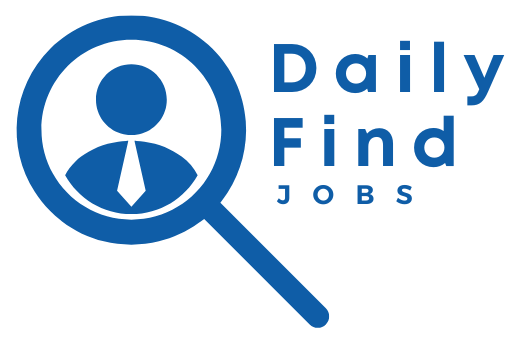Balancing work and personal life can be tricky, especially in a hybrid role. With the flexibility it offers, setting boundaries and understanding challenges become key to maintaining productivity and well-being. This guide aims to help you navigate the complexities of a hybrid work environment effectively. Explore this comprehensive introduction to maintaining a healthy work-life balance.
Understanding the Challenges of a Hybrid Role
Adapting to a hybrid role involves navigating a complex set of challenges, which requires balancing different needs and adjusting to varied work environments. Employees are challenged by the need to switch workflows between physical and virtual locations. Each environment comes with its own expectations and pressures.
One of the primary obstacles is the dual responsibility inherent in hybrid roles. Individuals must effectively communicate and collaborate across both physical and digital platforms. This can lead to an increased mental load and stress as employees strive to stay connected and engaged with their team.
Another challenge lies in managing time effectively. A hybrid role necessitates a flexible schedule, often blending personal and professional spheres. This means employees need clever strategies to manage their daily routines to prevent work from encroaching on personal time and vice versa.
To overcome these challenges, understanding personal limits and productivity zones becomes imperative. Identifying peak performance times can help in scheduling demanding tasks, ensuring efficiency without burnout. Building a routine that acknowledges these factors and allows room for adjustments is crucial for sustaining a healthy work-life balance.
Setting Clear Boundaries Between Work and Life
In today’s hybrid work environment, setting clear boundaries between work and personal life is crucial. With the fluid nature of hybrid roles, where the lines between home and office often blur, clear boundaries help maintain both productivity and well-being.
One key method is to define specific work hours. When working from home, it’s easy to drift away from a conventional schedule. Set start and end times for your workday and stick to them. This approach not only enhances your focus but also ensures you dedicate appropriate time to personal activities and relaxation.
Arranging a designated workspace is equally important. This doesn’t have to be a complete office setup but a space where you can concentrate on work. This helps create a mental barrier between work time and personal time, encouraging you to switch off after completing tasks.
Utilize the ‘do not disturb’ feature on devices during work tasks and personal moments. This creates an uninterrupted period that enhances productivity or relaxation respectively. Ensure that family members or housemates are aware of busy times so they know when you shouldn’t be disturbed.
It’s beneficial to communicate these boundaries clearly to your team and family. Let your colleagues know your available hours and make sure your family understands when you cannot be disturbed unless necessary. This communication fosters respect and understanding in both work and home environments.
Finally, build in regular breaks throughout your day, whether that means a quick walk or reading a book for a few minutes. These pauses are vital for recharging your mind, making it easier to transition between roles throughout the day.
Techniques to Enhance Productivity
In a hybrid role, finding ways to enhance productivity is crucial for success. This requires implementing strategies that maximize both time and energy efficiency. Time management is an essential skill to develop. Start by creating a detailed schedule that allocates specific time blocks for work and personal activities. Make use of digital tools like calendar apps to set reminders and stick to your planned tasks.
Another technique is to establish a dedicated workspace at home. This helps in maintaining focus and minimizing distractions. Ergonomic setups can greatly enhance productivity by providing comfort during long working hours.
Consider setting specific goals for each workday. These should be achievable and aligned with larger weekly or monthly objectives. Breaking down tasks into smaller, manageable steps can also prevent burnout and boost accomplishment levels.
Utilizing productivity techniques like the Pomodoro Technique can help maintain concentration and break the workday into intervals with focused working times followed by short breaks. This balances productivity with the necessary downtime, keeping the brain fresh.
Furthermore, communication plays a vital role. Regularly connecting with your team to align on tasks and expectations can prevent miscommunications and ensure productivity is maximized. Having open channels for feedback and suggestions fosters a collaborative environment, making it easier to meet objectives efficiently.
Health and Well-being Tips for Hybrids
In a hybrid role, maintaining good health and well-being is vital for balancing work and personal life. Start by creating a dedicated workspace that caters to both physical comfort and mental productivity. Your desk and chair should support good posture to prevent fatigue and long-term health issues. Incorporate ergonomic furniture to reduce strain from prolonged sitting.
Breaks are essential. Every hour, step away from your desk even if it’s just for a few minutes. This could be as simple as a brief walk, stretching, or even some quick meditation. Apps designed to remind you when to take breaks can be particularly useful.
Nutrition plays a significant role in your wellbeing, too. Whether working from home or the office, opt for healthy snacks and balanced lunches. Prepare meals that provide energy without causing sluggishness. Keep your body energized with a balanced intake of proteins, whole grains, and fresh vegetables.
Don’t forget the importance of hydration. Keep a water bottle at your desk and aim to drink regularly. Dehydration can lead to decreased concentration levels and increased fatigue.
Incorporating physical activity into your routine can also enhance health. You don’t need a full gym workout—quick exercises or a brief walk can invigorate your mind and body. Many hybrid workers find success by scheduling exercise into their work calendar as a non-negotiable part of their day.
Finally, prioritize sleep. Quality sleep is foundational for anyone trying to manage work-life balance effectively. Consistent sleep routines improve focus, memory, and overall mood, which can lead to increased productivity and satisfaction in both personal and professional realms.
Leveraging Technology for Better Balance
Technology offers a plethora of tools and platforms designed to help individuals maintain a healthy work-life balance. By utilizing apps that facilitate task management and scheduling, like Trello or Slack, hybrid workers can organize their workloads more efficiently. These tools allow for seamless collaboration, ensuring that communication remains fluid between team members, regardless of their physical location.
Automating routine tasks using technology can significantly reduce the time spent on mundane activities, thereby freeing up time for personal life. Applications that automatically sort emails, schedule recurring meetings, or even manage daily to-do lists can streamline processes and reduce cognitive load, leading to improved mental clarity.
Leveraging Cloud-Based Solutions
Working in a hybrid role often means that flexibility is key. Cloud-based solutions such as Google Workspace or Microsoft 365 allow for easy access to files and documents from any device. This ensures that whether a worker is at home or in the office, they can seamlessly pick up tasks where they left off, reducing transition time and stress.
Additionally, setting up digital boundaries is crucial. Tools like Freedom can block distracting websites during work hours, improving focus and efficiency. Meanwhile, apps designed for mindfulness and relaxation, such as Calm or Headspace, can provide much-needed breaks to recharge mentally.
Inevitably, the integration of technology into daily routines needs to be strategic and intentional. By choosing the right tools that align with personal and professional goals, technology can be the linchpin for achieving an optimal balance in a hybrid work model.


